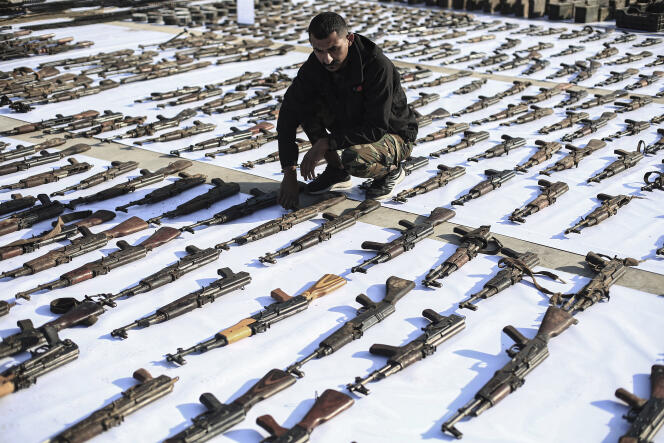
From its Syrian sanctuary, the Badiya desert south of the Euphrates, where it has rebuilt its operational capabilities, the Islamic State (IS) organization is extending its influence from east of Homs to the Diyala province, on the border between Iraq and Iran. Five years after its defeat at Baghuz in March 2019, which marked the collapse of the "caliphate" it had proclaimed over a third of Iraq and Syria in 2014, the black-flagged jihadist movement is engaged in a war of attrition. Bent on rebuilding their networks, its cells are carrying out deadly ambushes and, occasionally, large-scale attacks.
"We continue to see a real threat in Iraq and Syria," said Ian McCary, Deputy Special Envoy for the Global Coalition to Defeat ISIS at the US State Department, in an interview for the Washington Institute for Near East Policy (WINEP) on March 21. The coalition's action in support of the Syrian Democratic Forces (Kurdish-dominated SDF) in northeastern Syria and Iraqi forces since 2014 has, however, "significantly reduced the organization's ability to carry out attacks," he said. Since March 2023, only a third of the 1,120 attacks claimed by IS worldwide have taken place in Iraq and Syria, noted WINEP expert Aaron Zelin, while its franchises in Afghanistan and Africa are growing in strength.
While a repetition of a scenario that would see the Islamic State once again take control of entire territories in Syria and Iraq seems excluded, the risk of a resurgence of the jihadist group is flagged up by UN experts charged with assessing this threat, despite significant losses in the group's leadership. In a February report, they estimate that the IS still has between 3,000 and 5,000 members in Syria and Iraq.
The collapse of Syrian state institutions and the fragmentation of the militia landscape in Syria have enabled the organization to establish a sanctuary in the Badiya desert, a trafficking zone under the control of forces loyal to President Bashar Al-Assad and pro-Iranian militias, noted Patrick Haenni and Arthur Quesnay in a note for the European University Institute.
Release of seasoned fighters
Further afield, the Islamic State is extending its influence into the provinces of Raqqah and Deir ez-Zur where Kurdish forces are struggling to impose their control on the Arab population. In Idlib province, in northwest Syria, where several of its leaders took refuge before being eliminated, IS is exploiting the weak control exerted over rural areas by the Islamist group Tahrir Al-Sham, the dominant force in this region. In Iraq, the group is reorganizing itself in the disputed territories between Baghdad and Erbil in the country's northeast, as well as in provinces beset by sectarian tensions between Sunnis and Shiites, and among the millions of people displaced to informal settlements since the end of the war against IS in 2017.
You have 48.86% of this article left to read. The rest is for subscribers only.